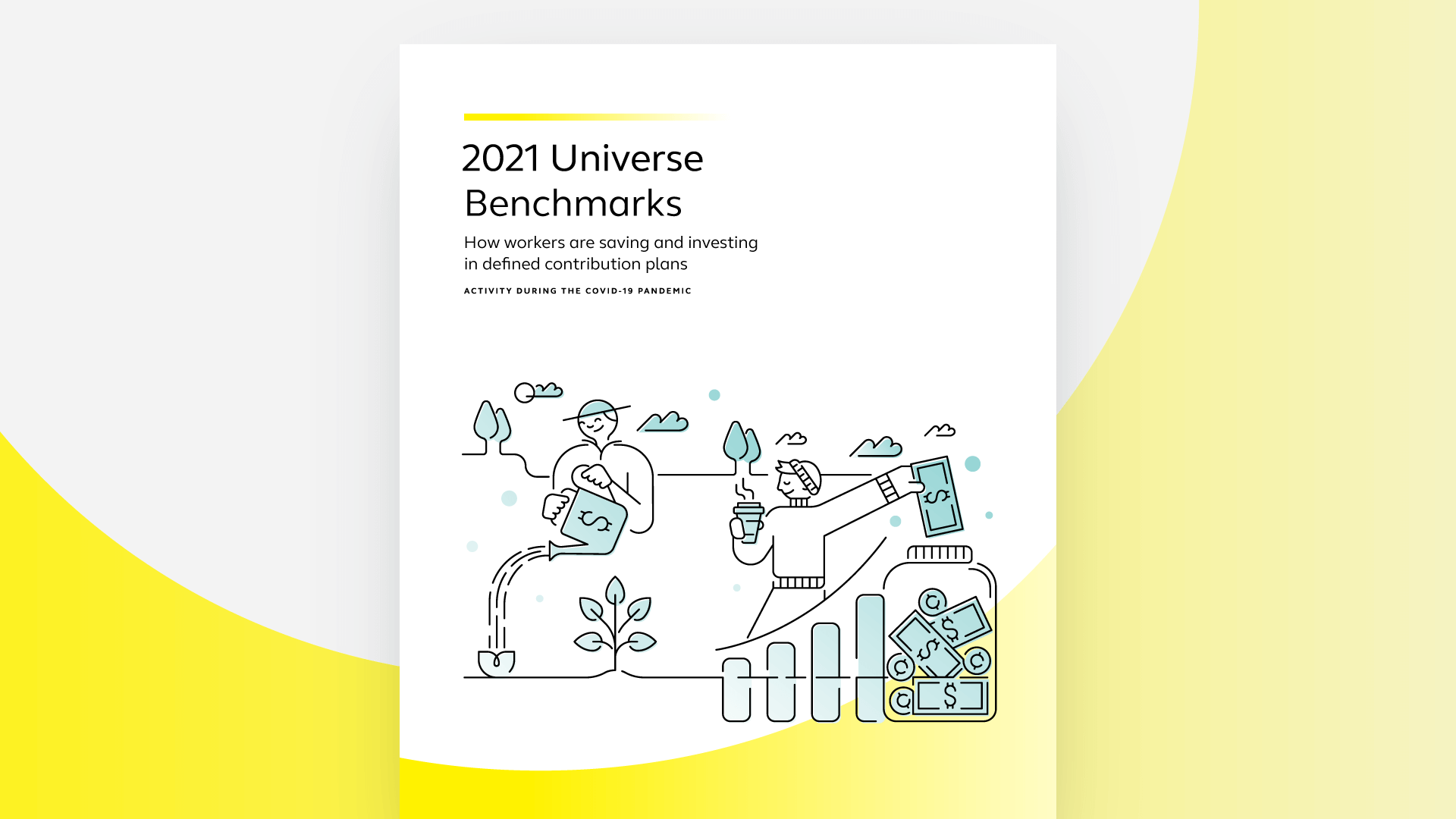
Our 2021 Universe Benchmarks report is the latest in a long line of annual reports that illustrate how workers are saving and investing in defined contribution (DC) plans. This year’s version features data from 100 plans covering more than three million eligible participants. It highlights the most common benchmarking statistics, including plan participation rates, savings rates, balances, investment and trading activity and distributions from accounts (e.g., loans, withdrawals, cash-outs and rollovers).
Last year, the COVID-19 pandemic shifted priorities in every part of our lives, including our long-term financial health. A shaky stock market led to skyrocketing trading levels in early 2020, and new legislation included in the CARES Act led to a spike in plan withdrawals. But as discretionary spending decreased and some received stimulus checks, DC plan participation and savings increased. As sports, entertainment and travel slowly return, it remains to be seen if workers will continue to save at higher rates.
See the highlights below and download the full report for detailed insights on workers’ behaviors in DC plans.
As workers report reduced spending, DC plan contribution rates and balances are increasing.

The average plan balance increased by 7% in 2020 to an all-time high of $130,330
The average contribution rates slightly increased from 2019 to 8.3%
This is the first time we’ve seen the majority of participants saving above 6%
More plan participants were keeping their assets in DC plans.

35% of workers who left their employer in 2020 kept their assets in the plan, up from 32% in 2019
61% of assets remained in the plan after termination – a 6-point increase from 2019
Only 40% of people took a cash distribution, down from 44% in 2019
The CARES Act resulted in more withdrawals than usual.

10.5% of participants took a plan withdrawal, an increase from 6.5% in 2019
9% of withdrawals in 2020 were for hardship reasons, down 25% from 2019
The average outstanding loan principal rose to 21% - likely caused by people deferring their loan payments as allowed by the CARES Act.



